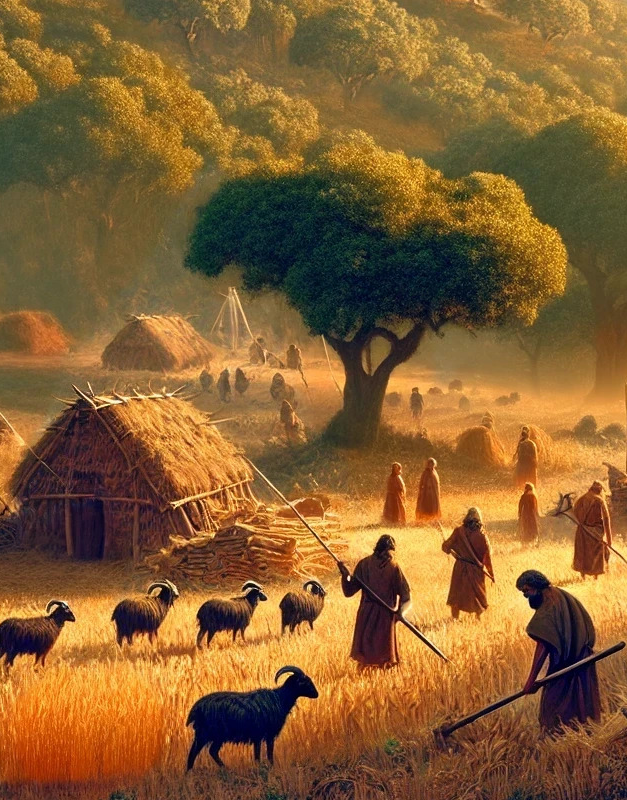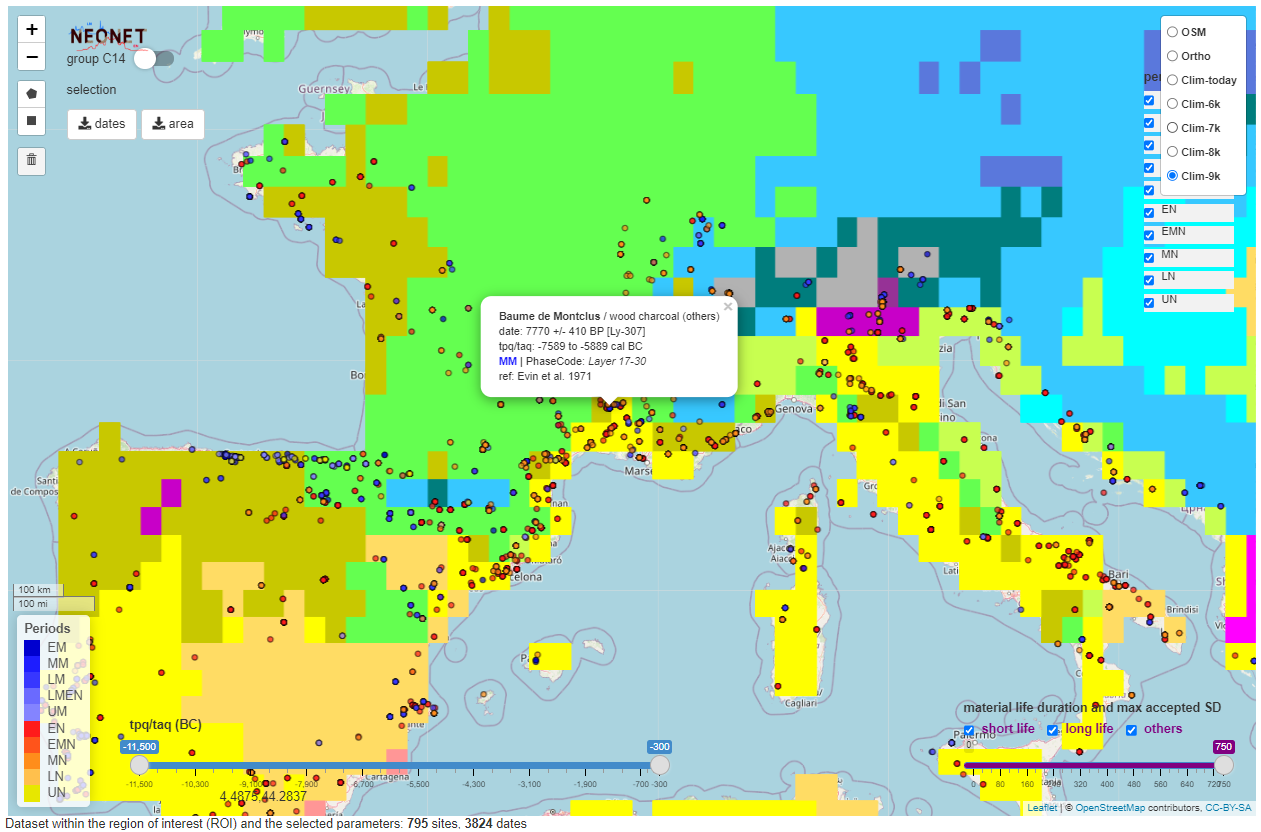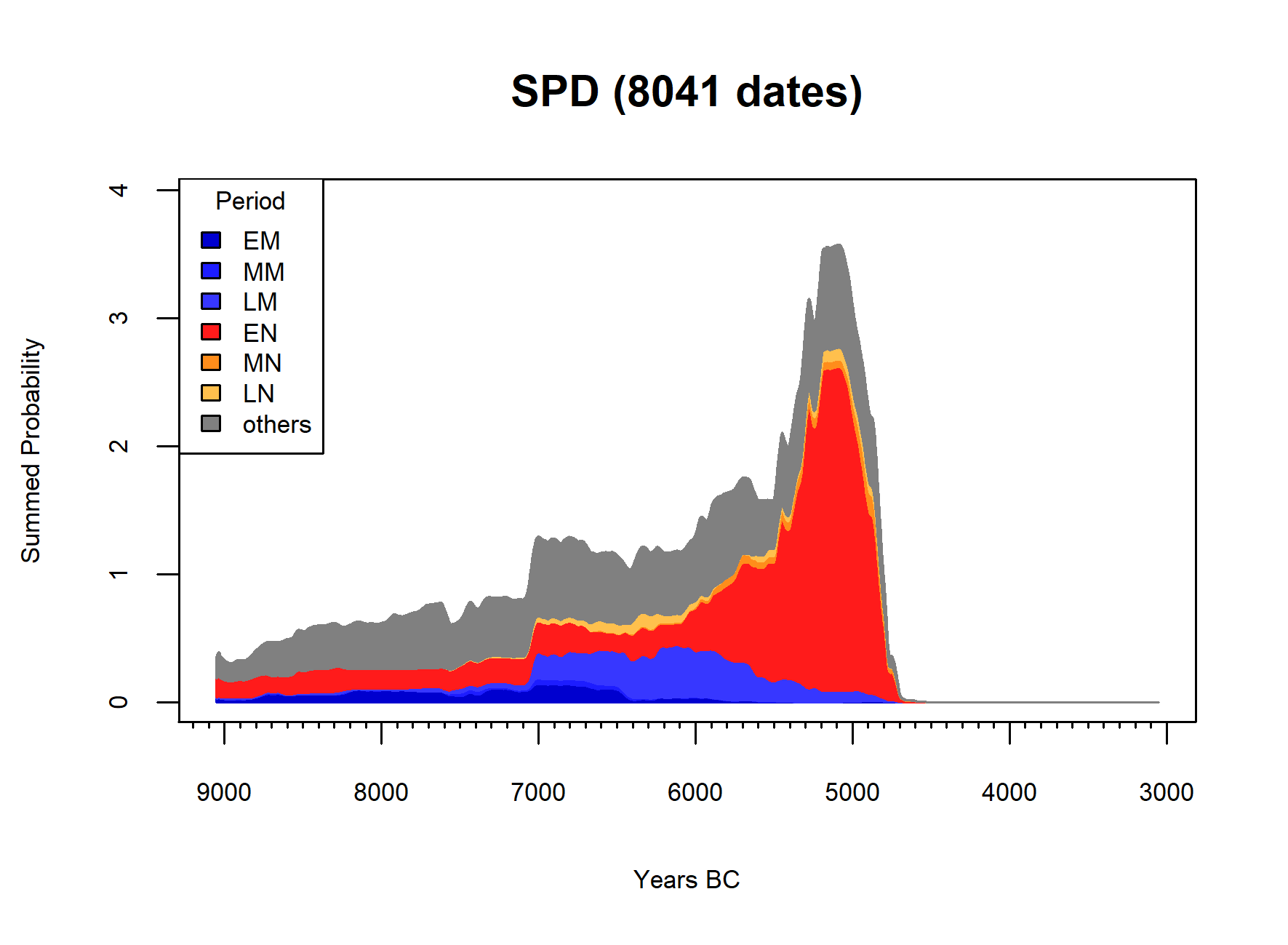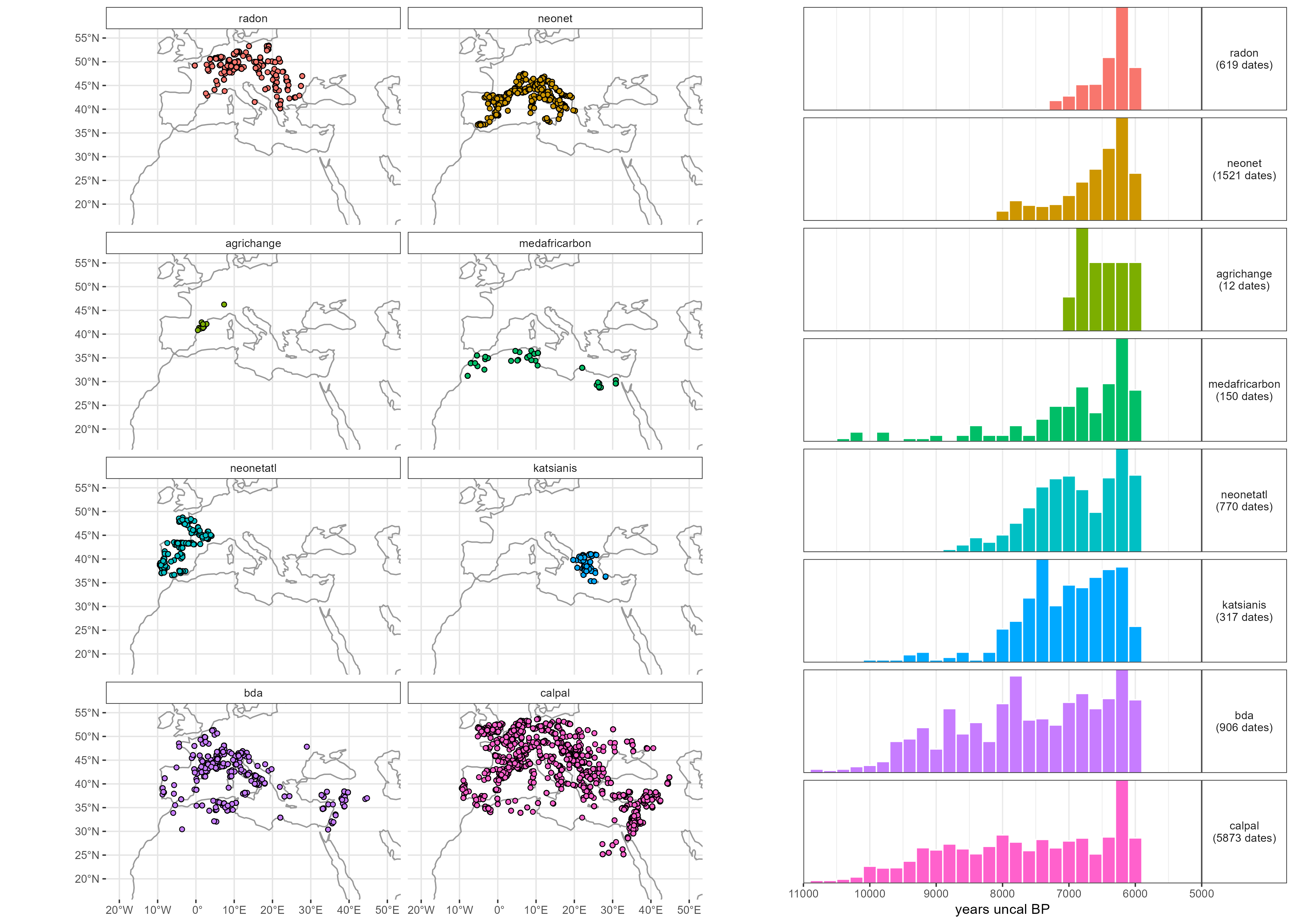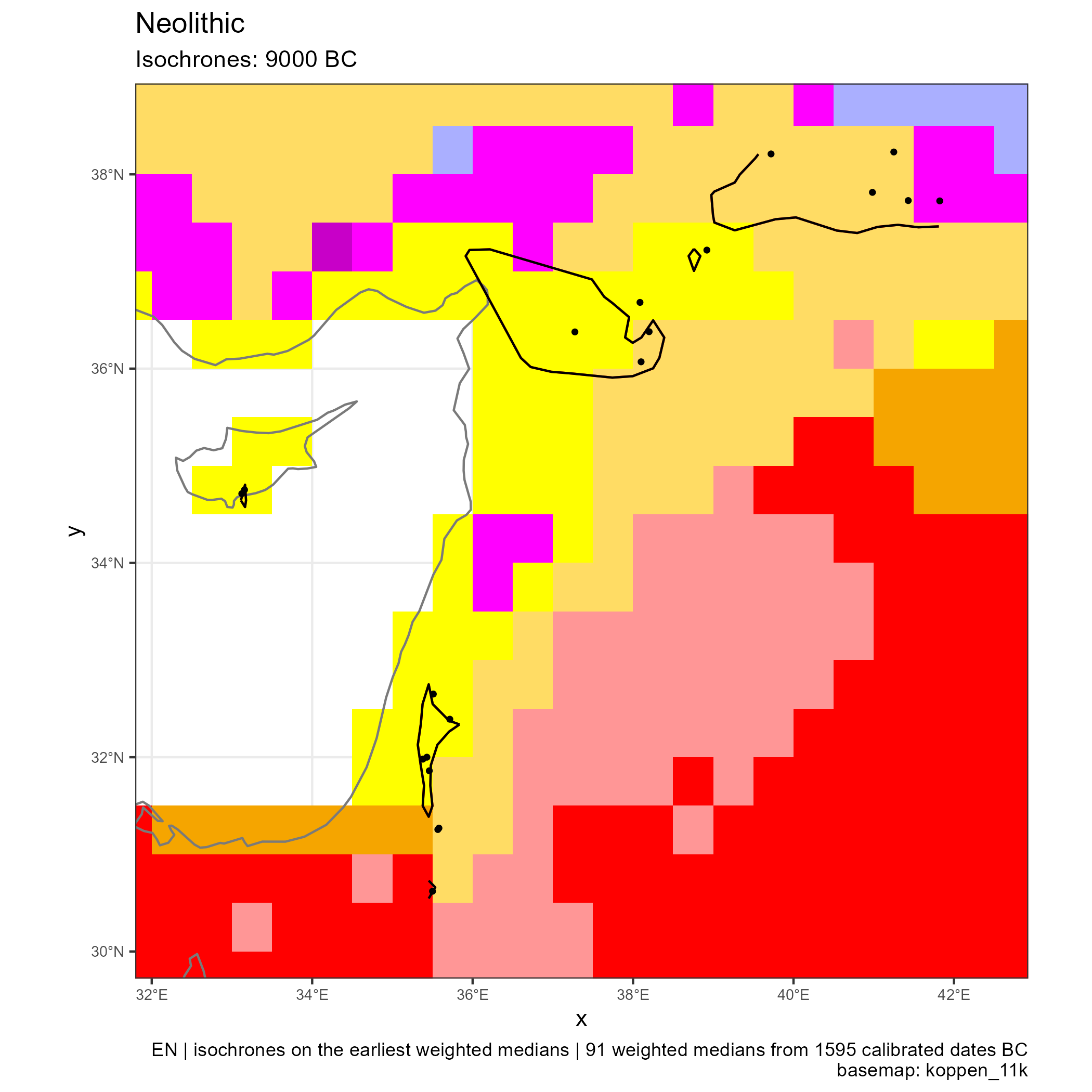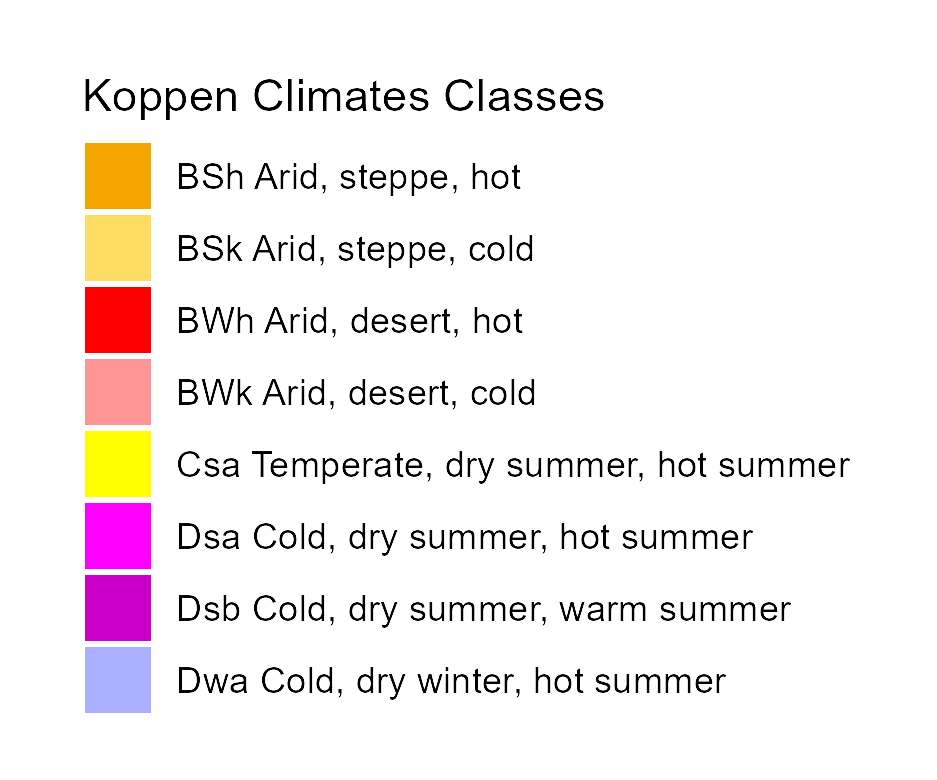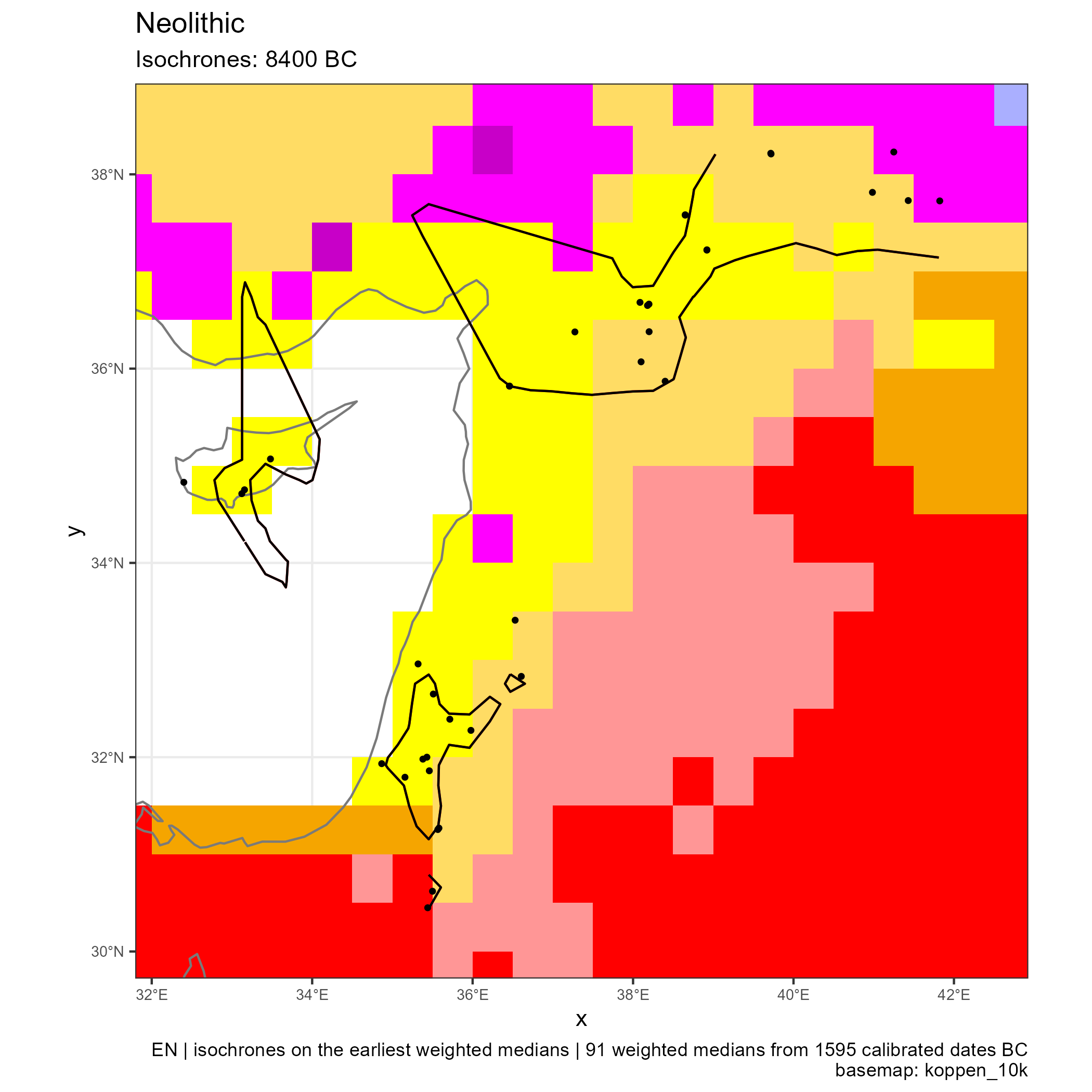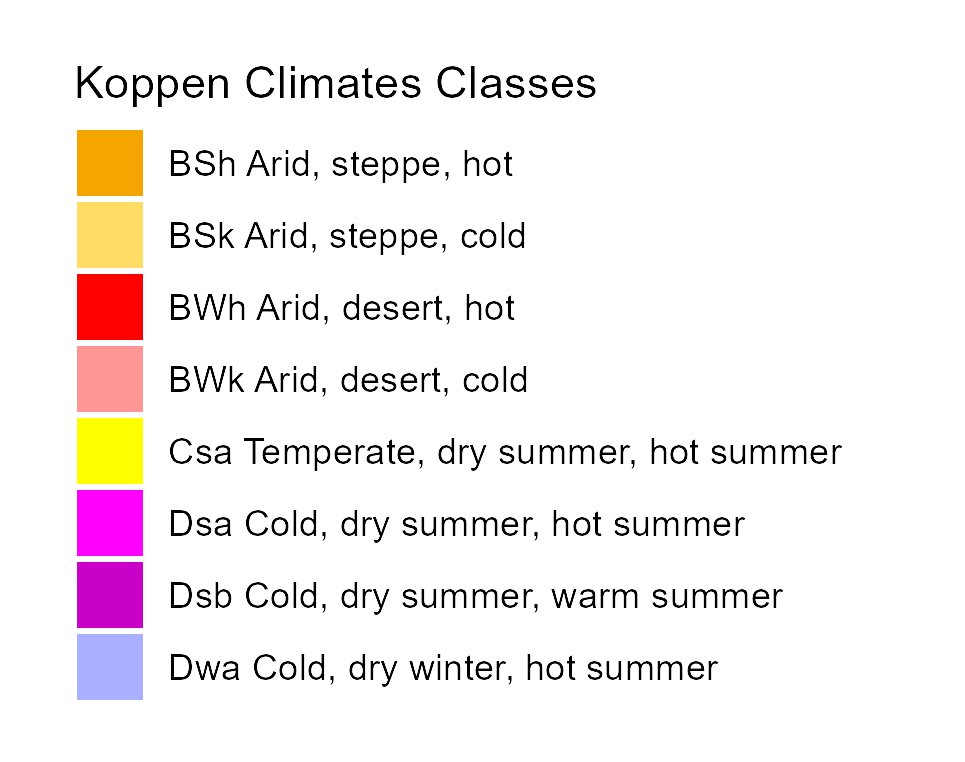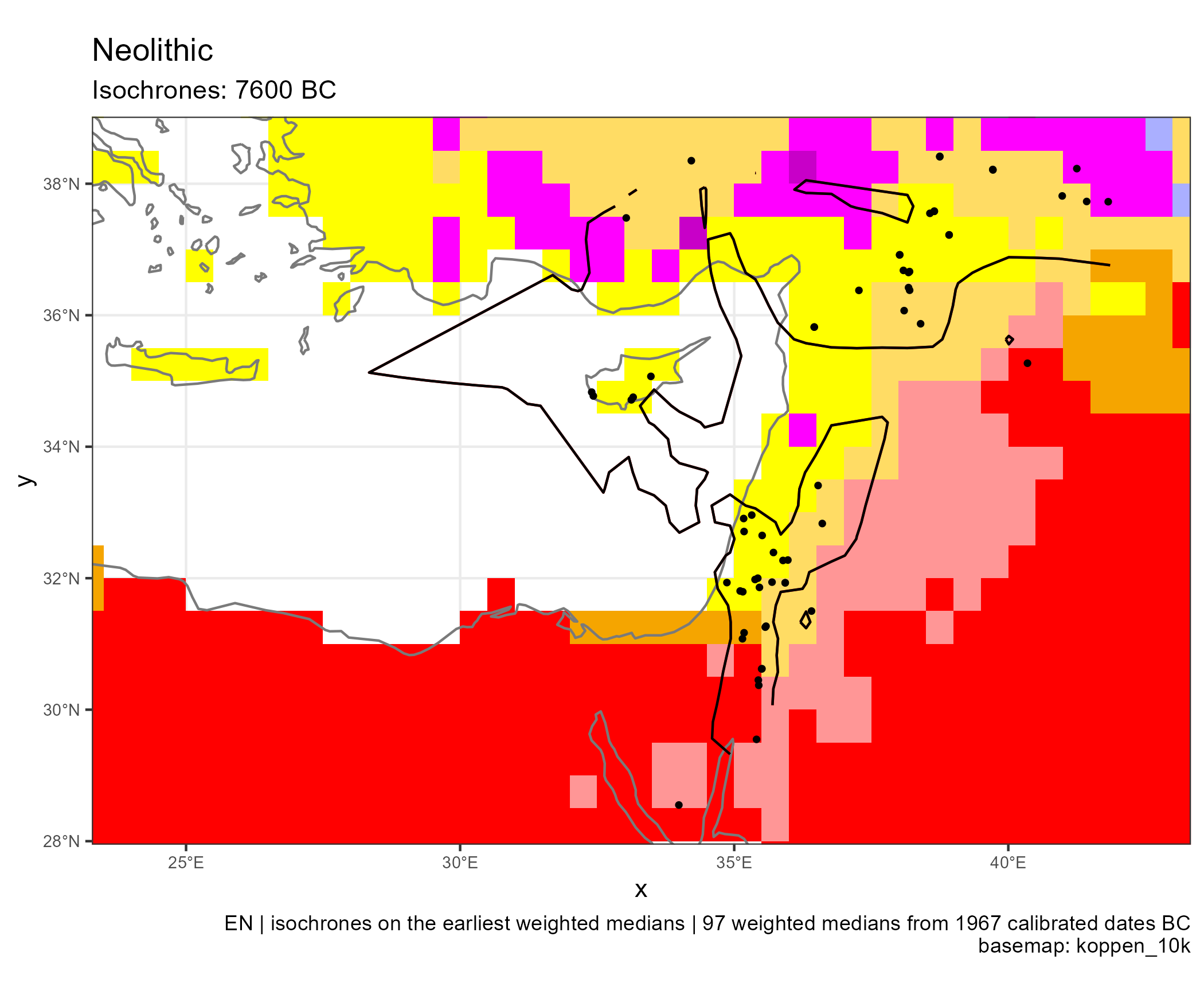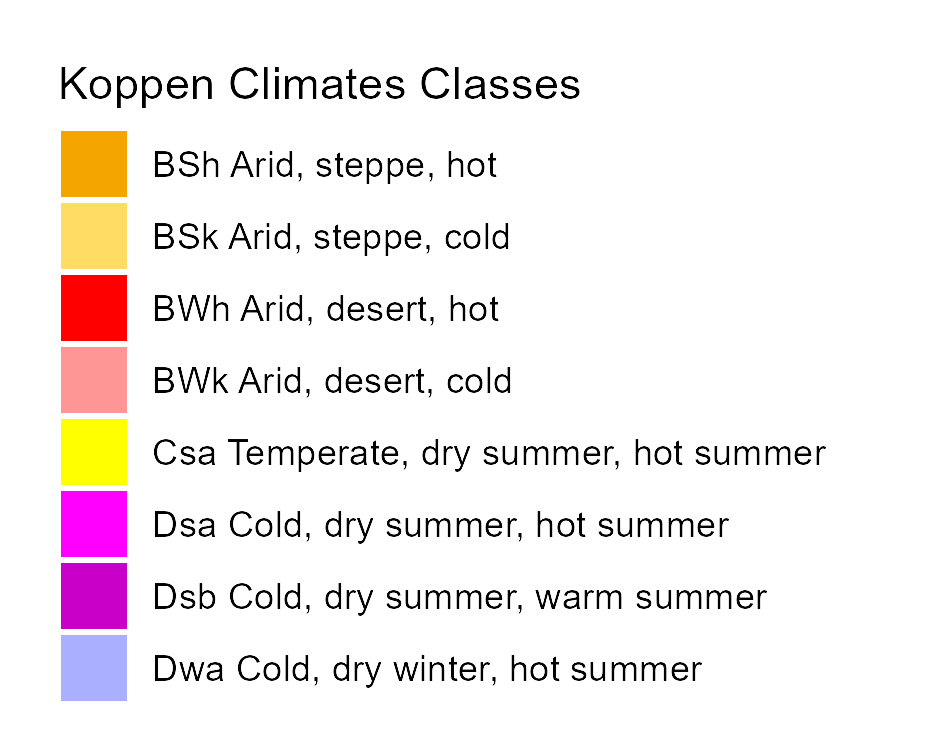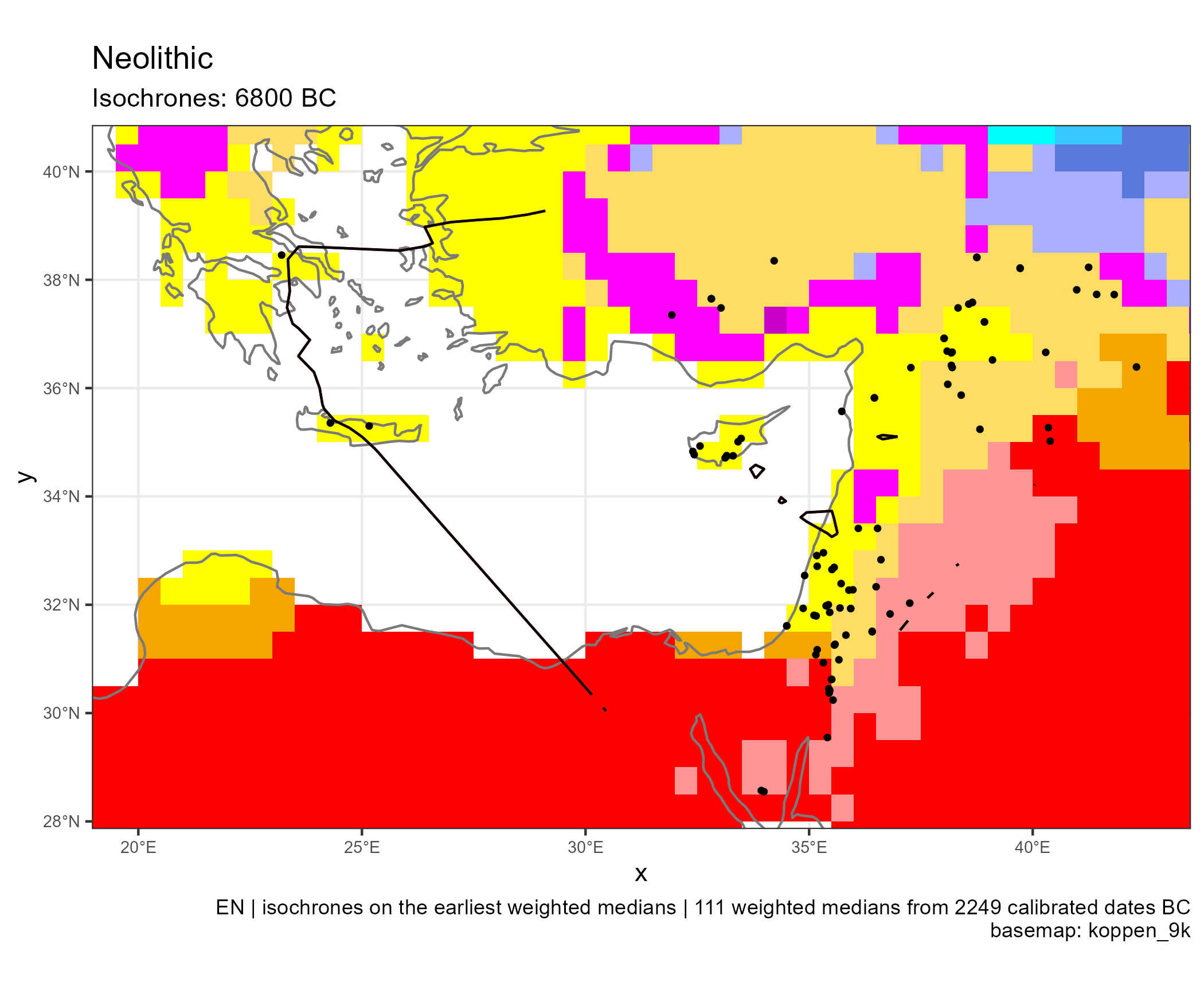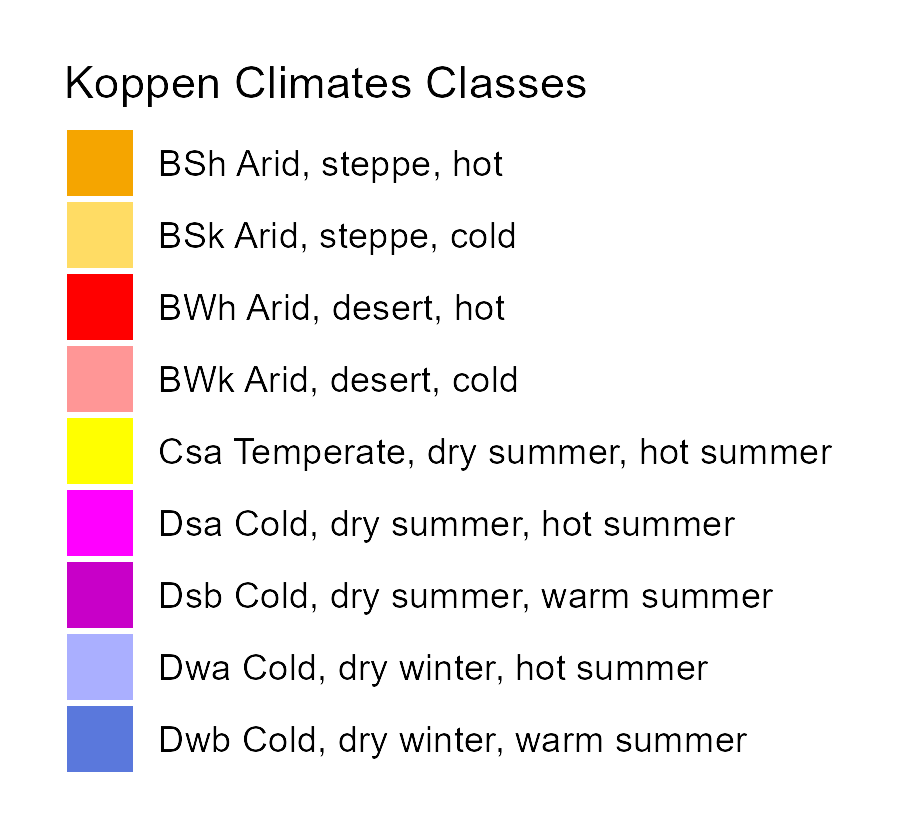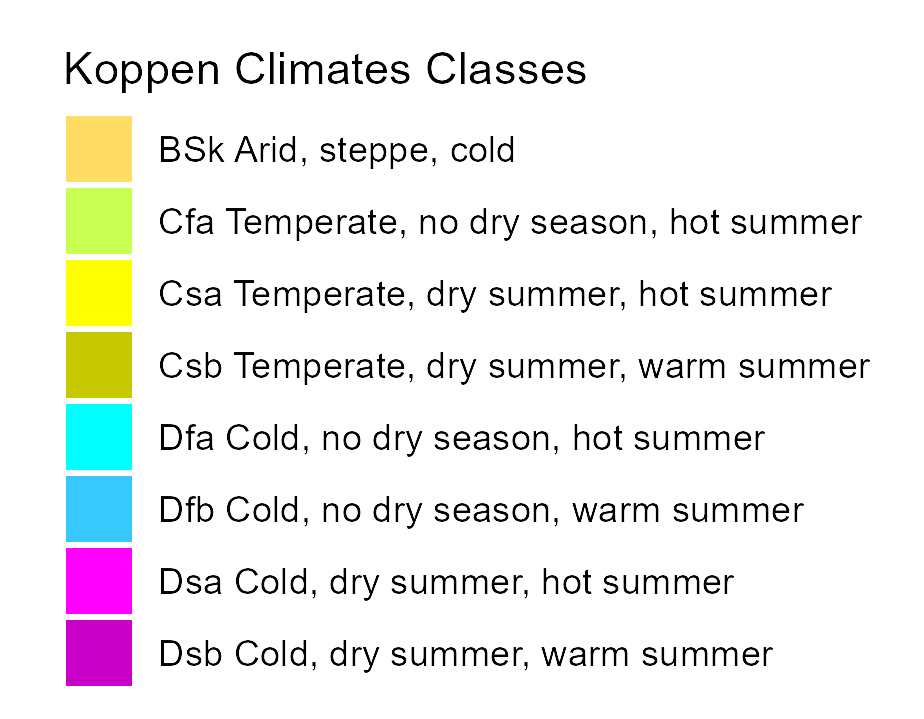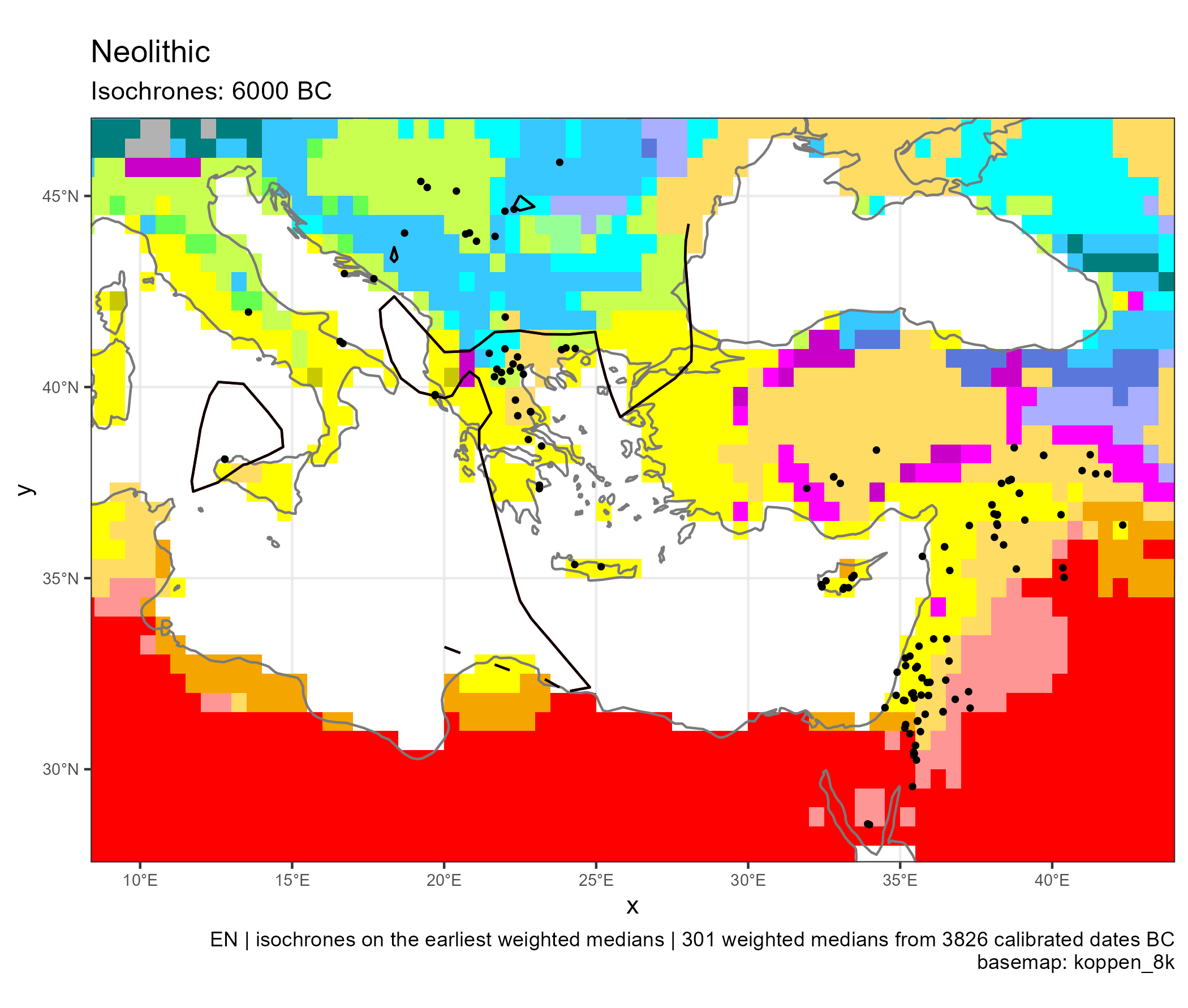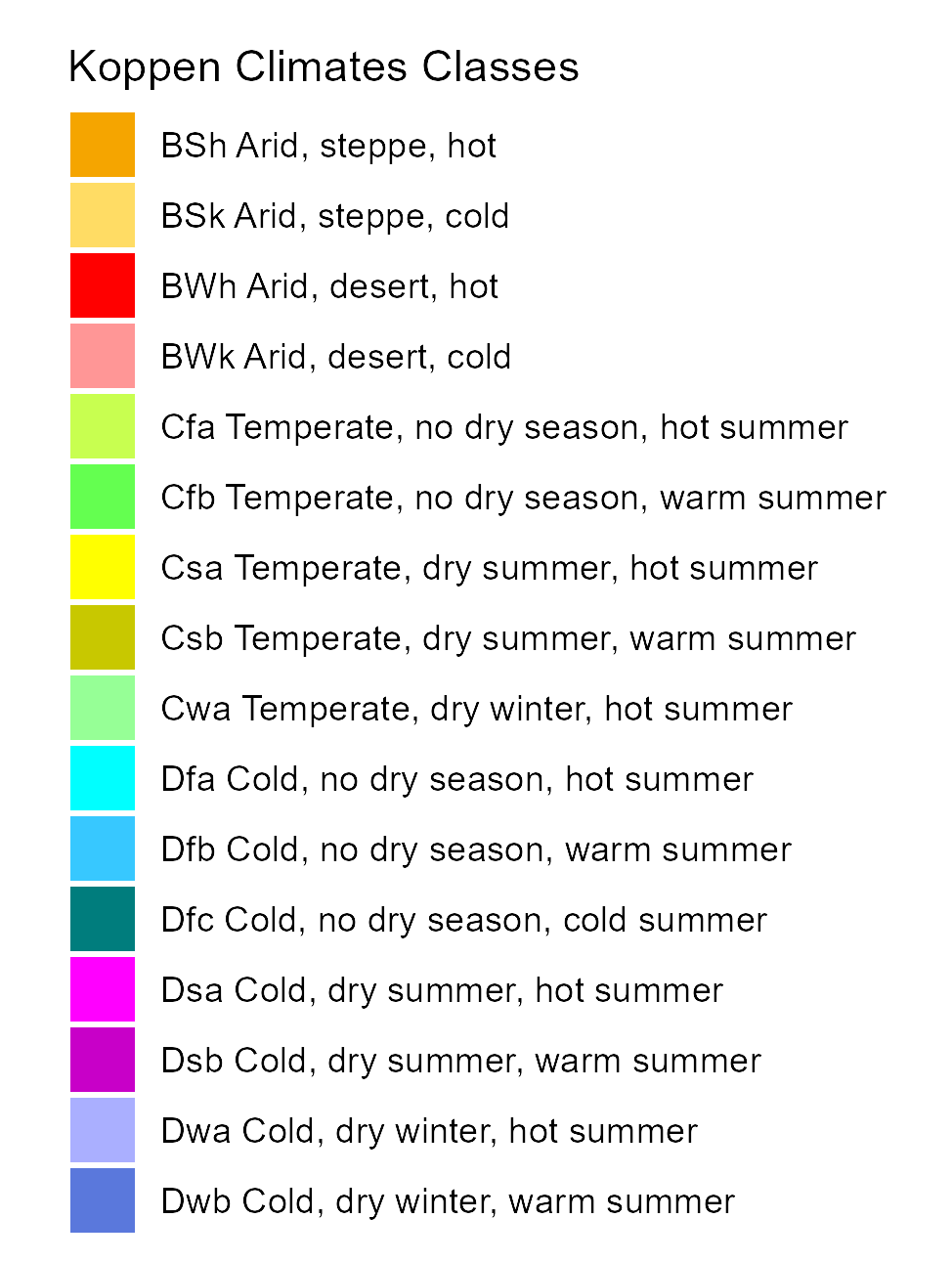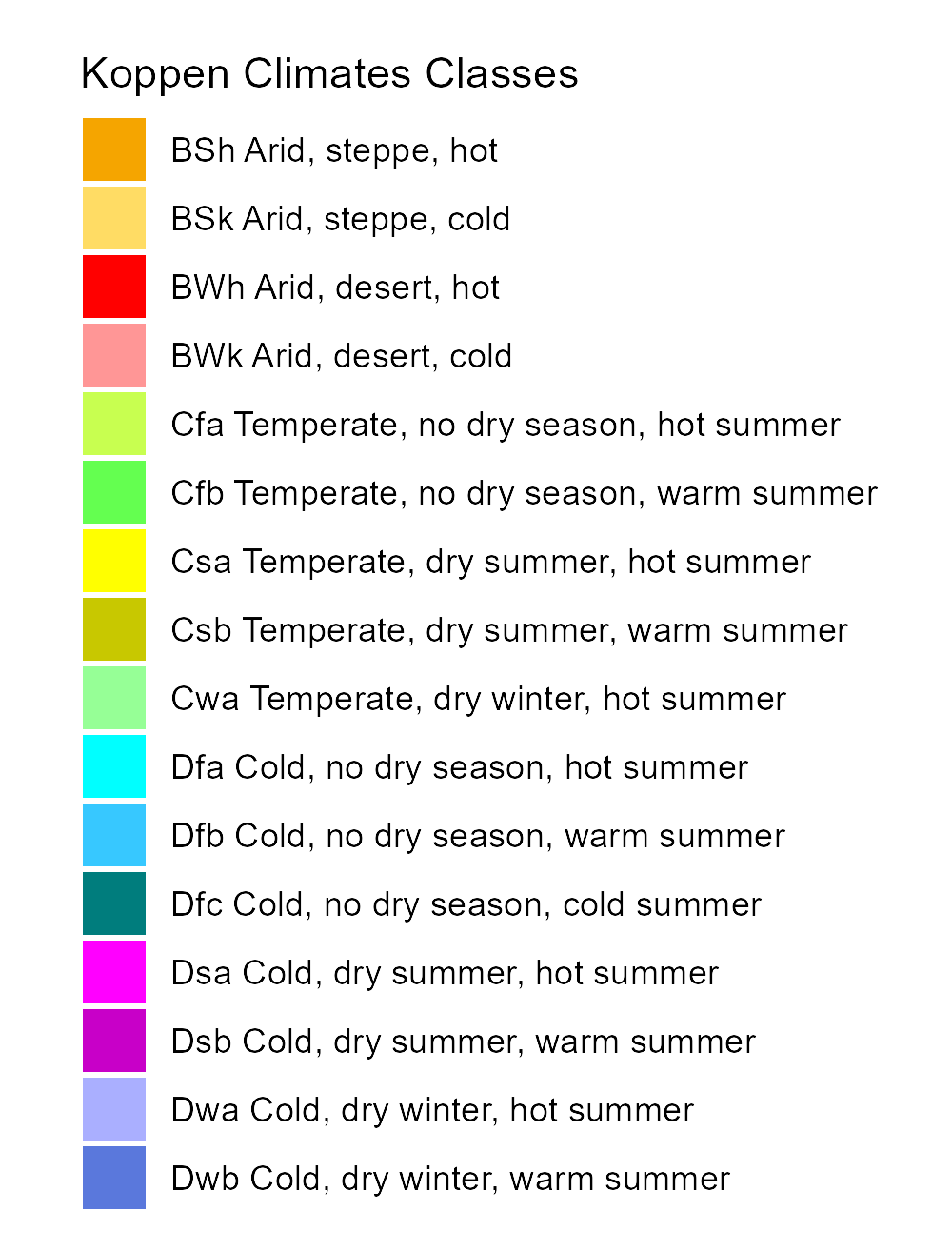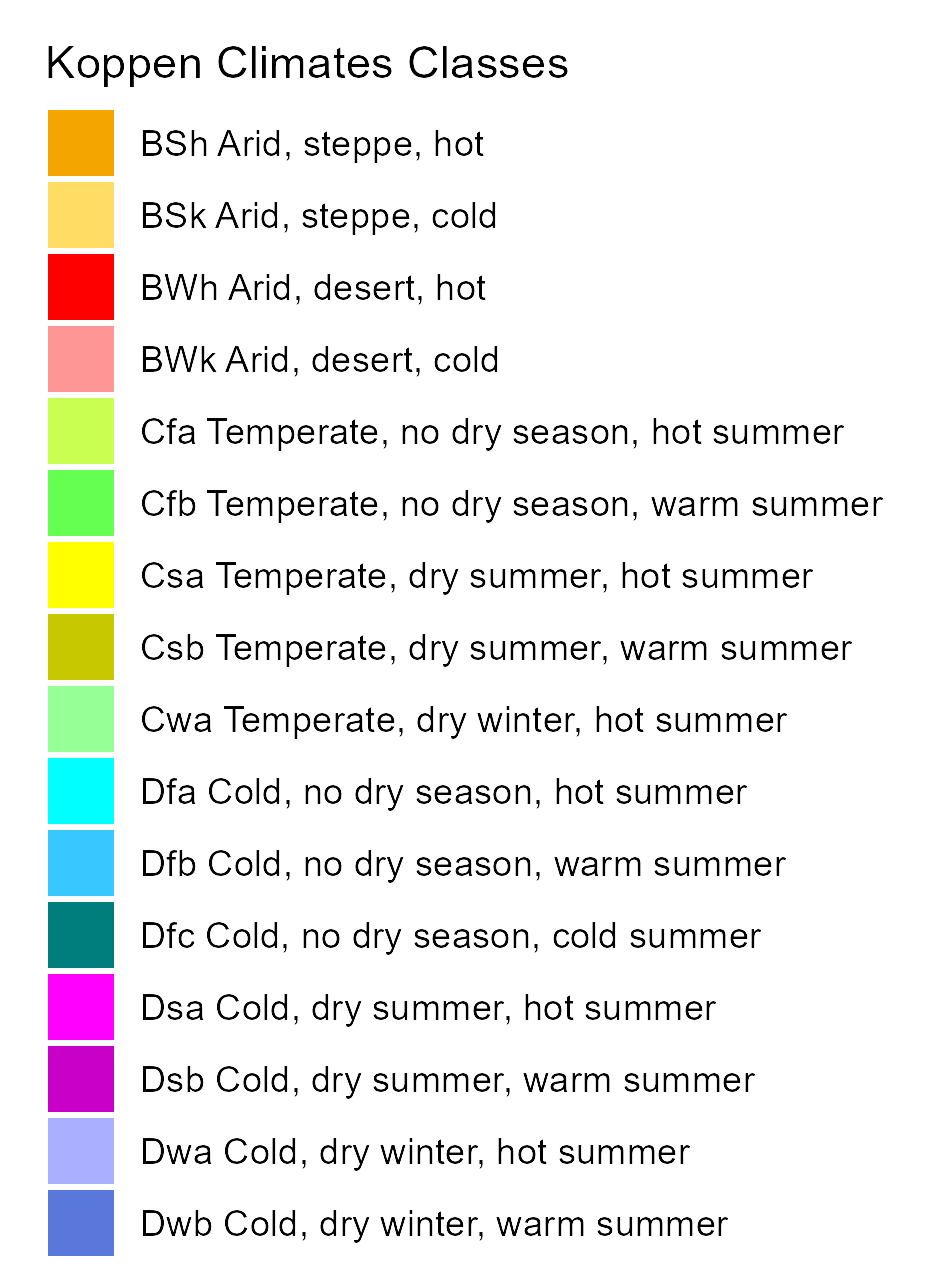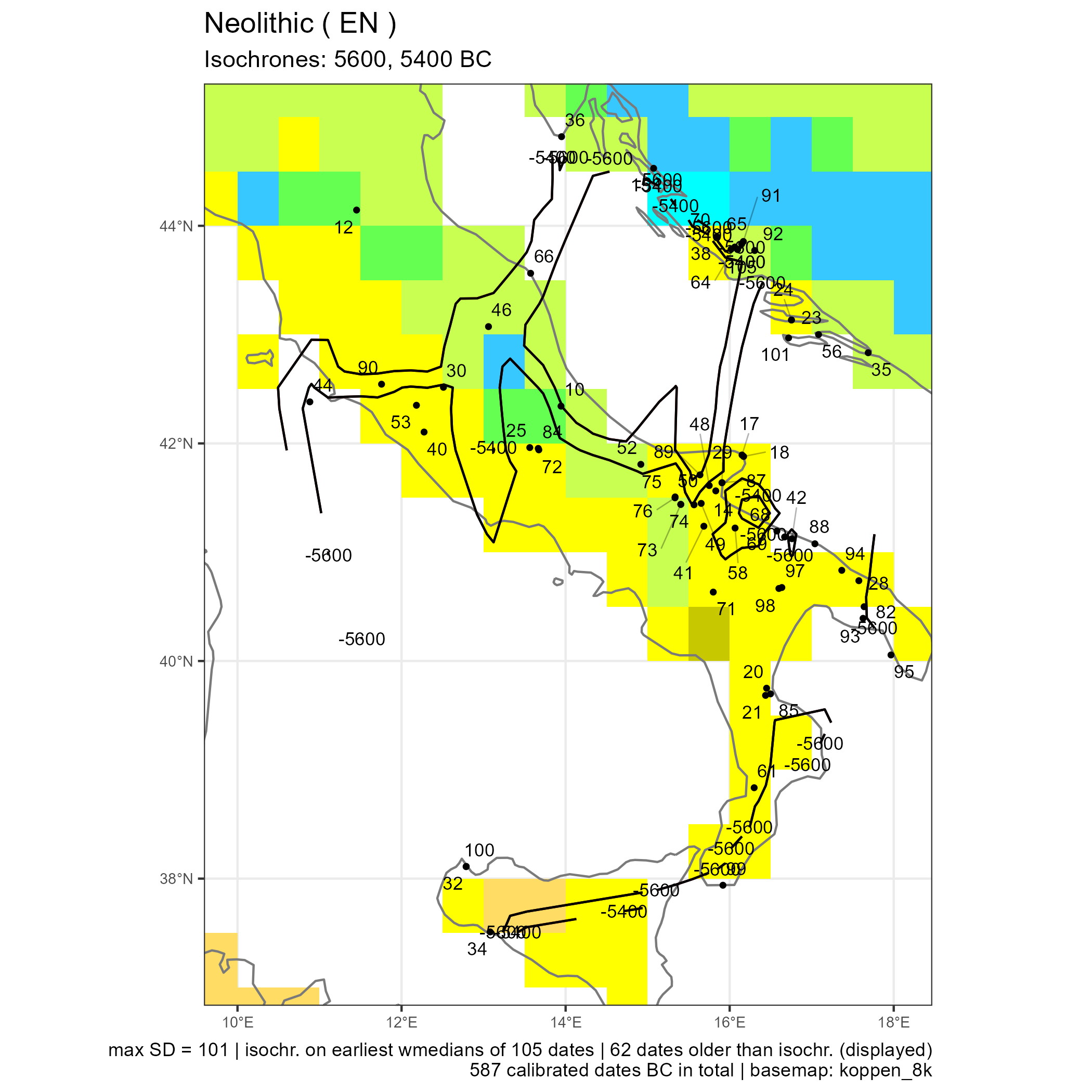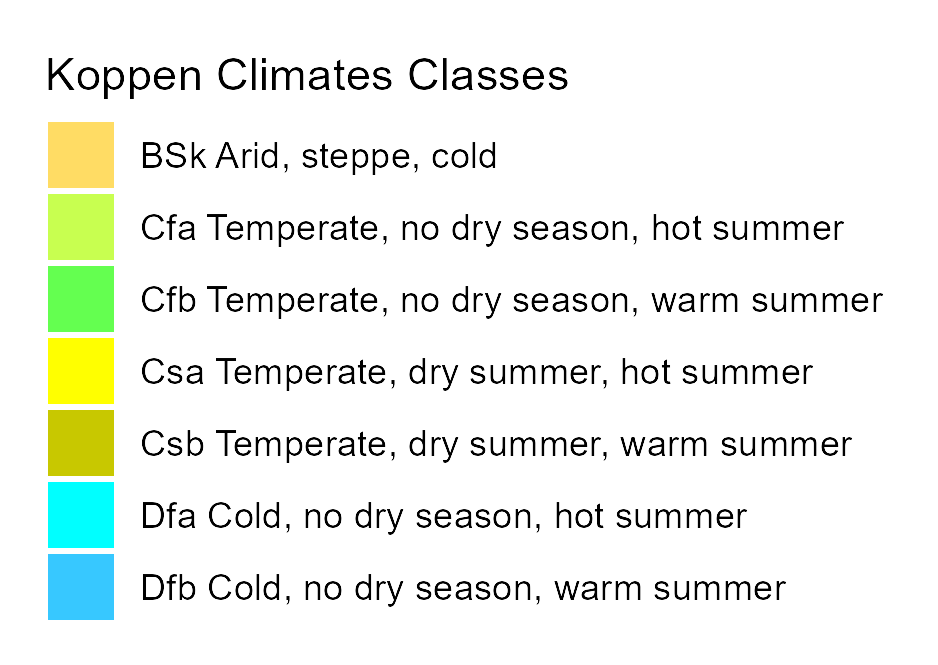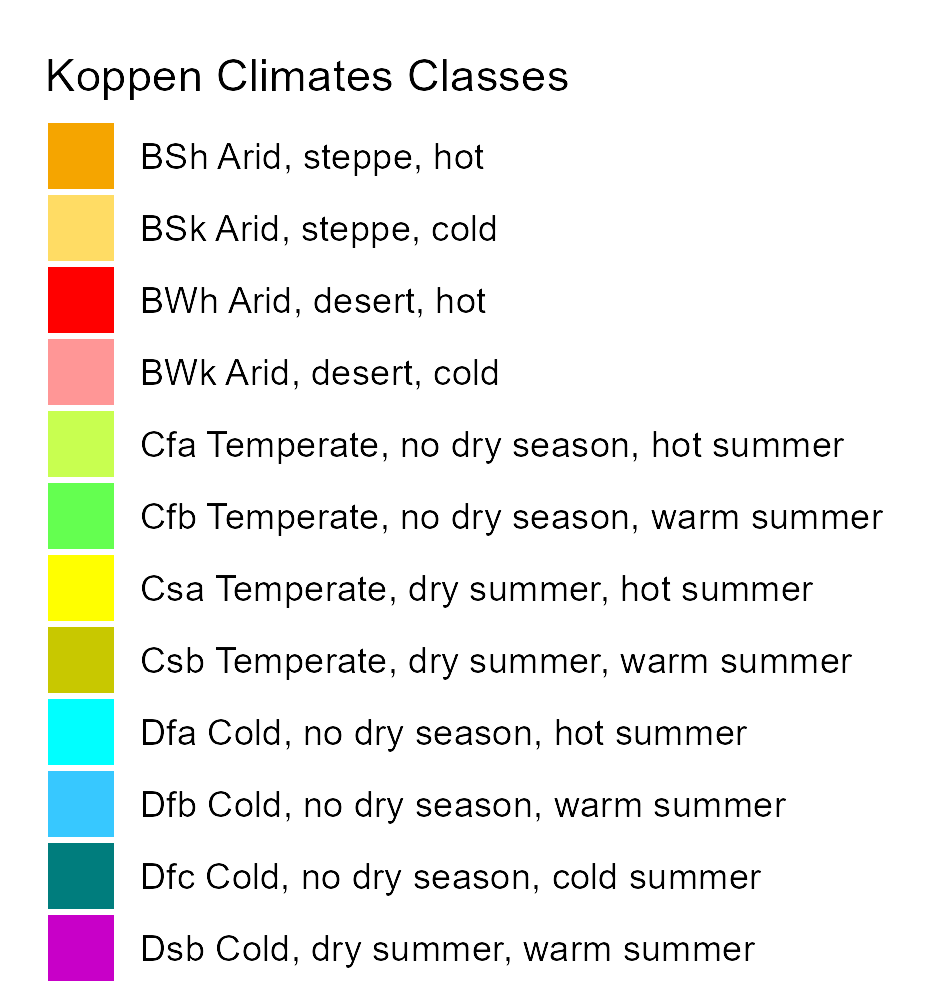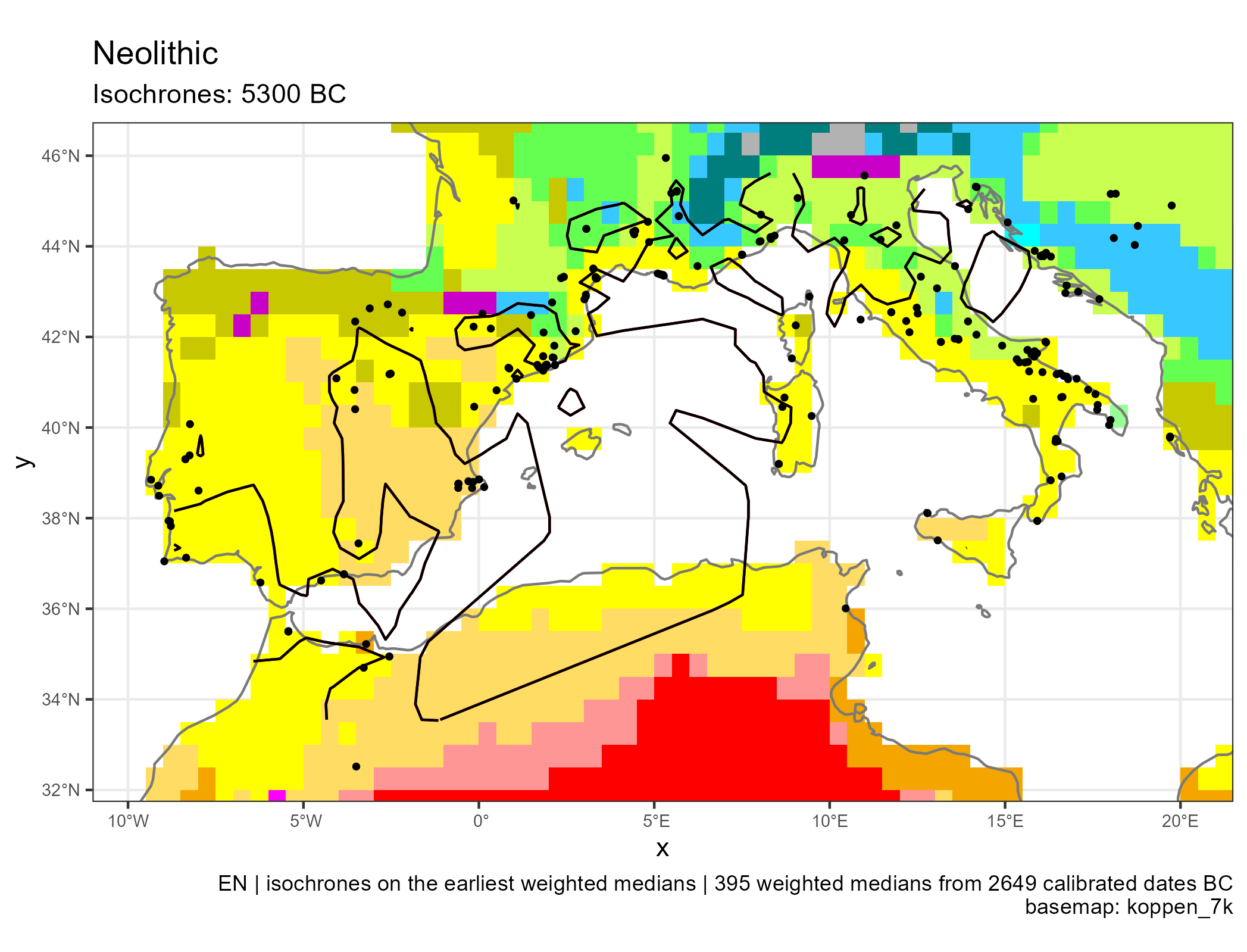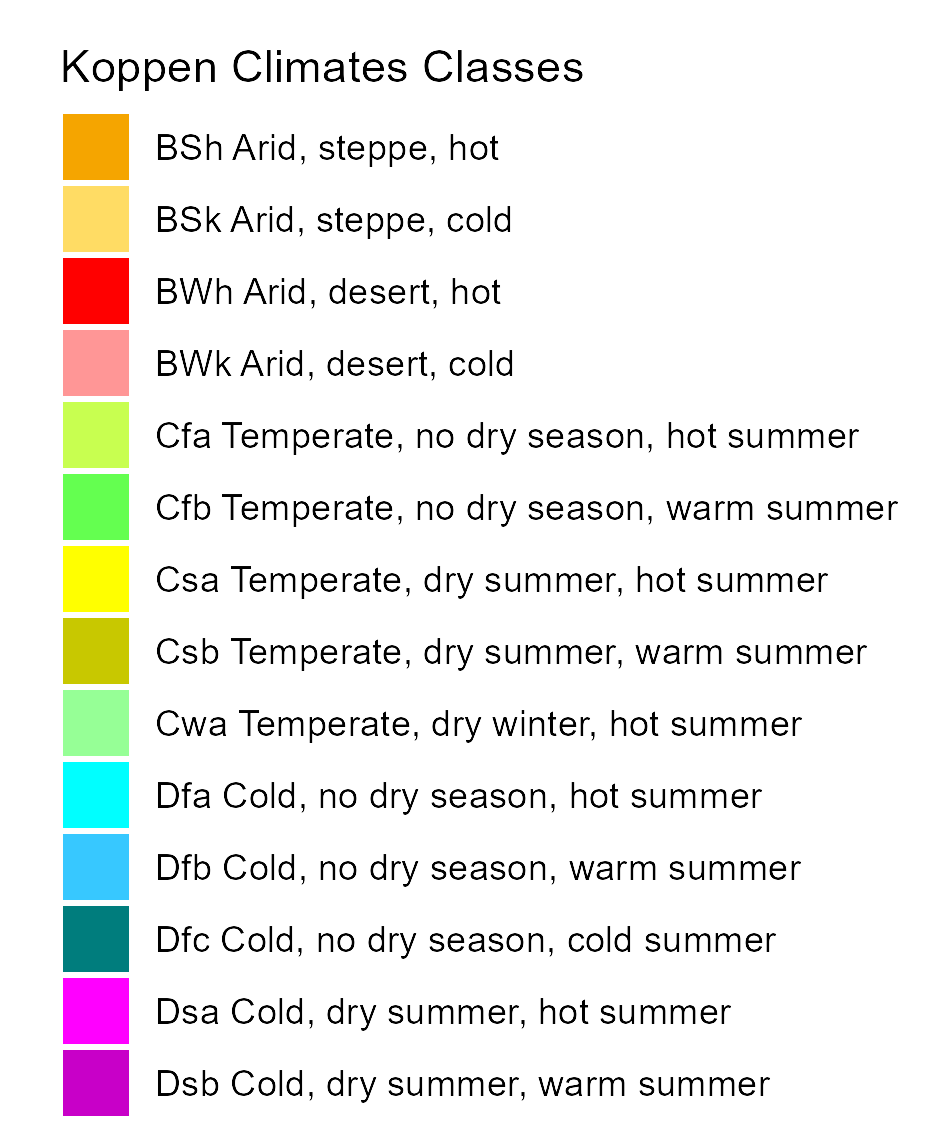Climates during the Spread of Farming in the Mediterranean
University of Oxford
Università di Pisa
University of Cambridge
Introduction
Social Interactions in Mediterranean Prehistory  21-23 October 2024, Barcelona, Spain
21-23 October 2024, Barcelona, Spain
Late Foragers and Early Farmers
Framework
Neonet project
Early Mesolithic (EM)
Middle Mesolithic (MM)
Late Mesolithic (LM)
Early Neolithic (EN)
Middle Neolithic (MN)
Late Neolithic (LN)

Baume de Montclus, stacked SPD

Franchthi cave, stacked SPD

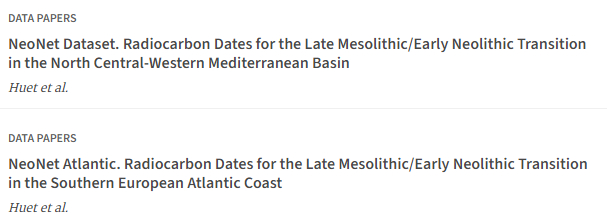

- Open Data, Open Source, Open Access
- Scalable, Incrementable, Reusable, Analyzable
Materials and Methods
Radiocarbon data
| EM - Early Mesolithic |
| MM - Middle Mesolithic |
| LM - Late Mesolithic |
| EN - Early Neolithic |
| MN - Middle Neolithic |
| LN - Late Neolithic |
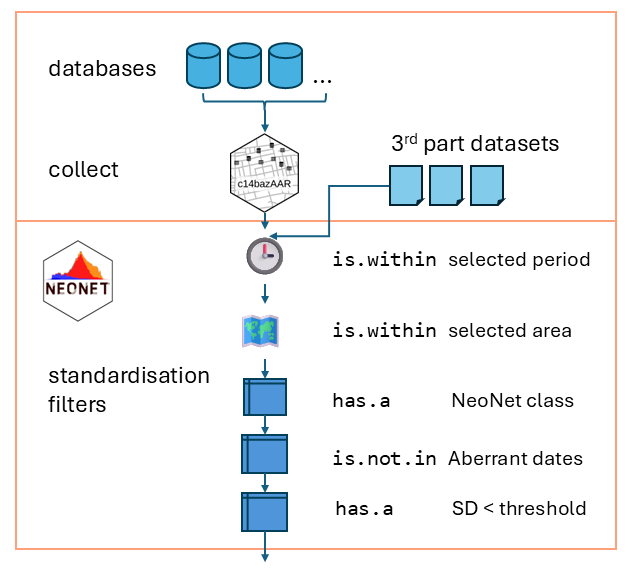
Climates data
Mean annual temperature (ºC)

Annual precipitation (mm year -1)

Biome (pollen-based)

Beyer et al. 20203
Modelling
Most recent LM and most ancient EN date weighted medians by site 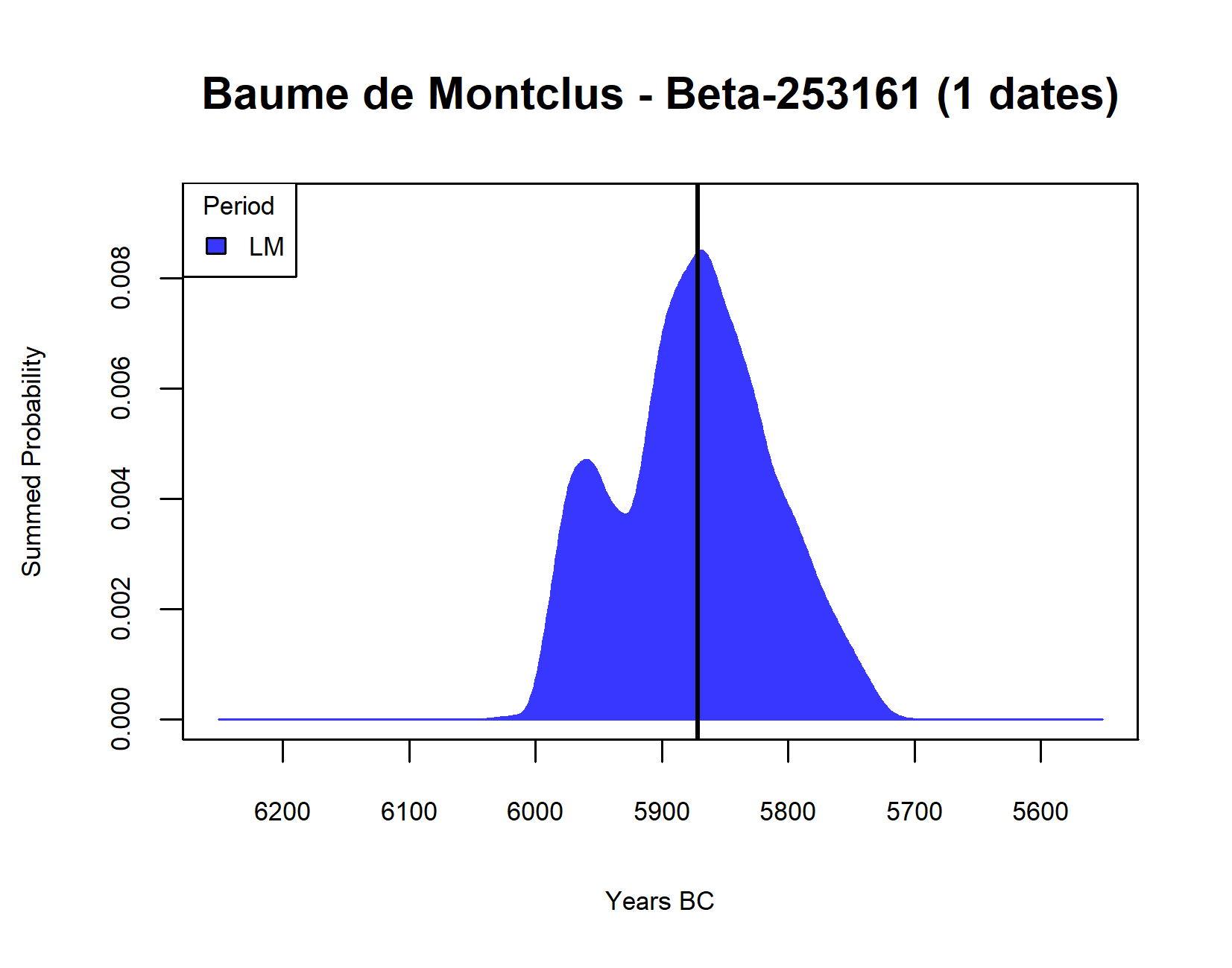
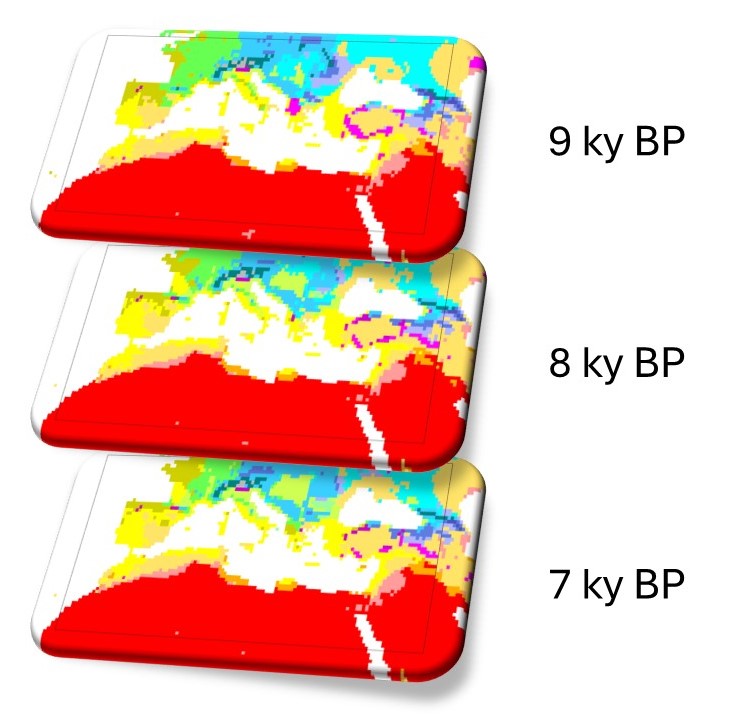

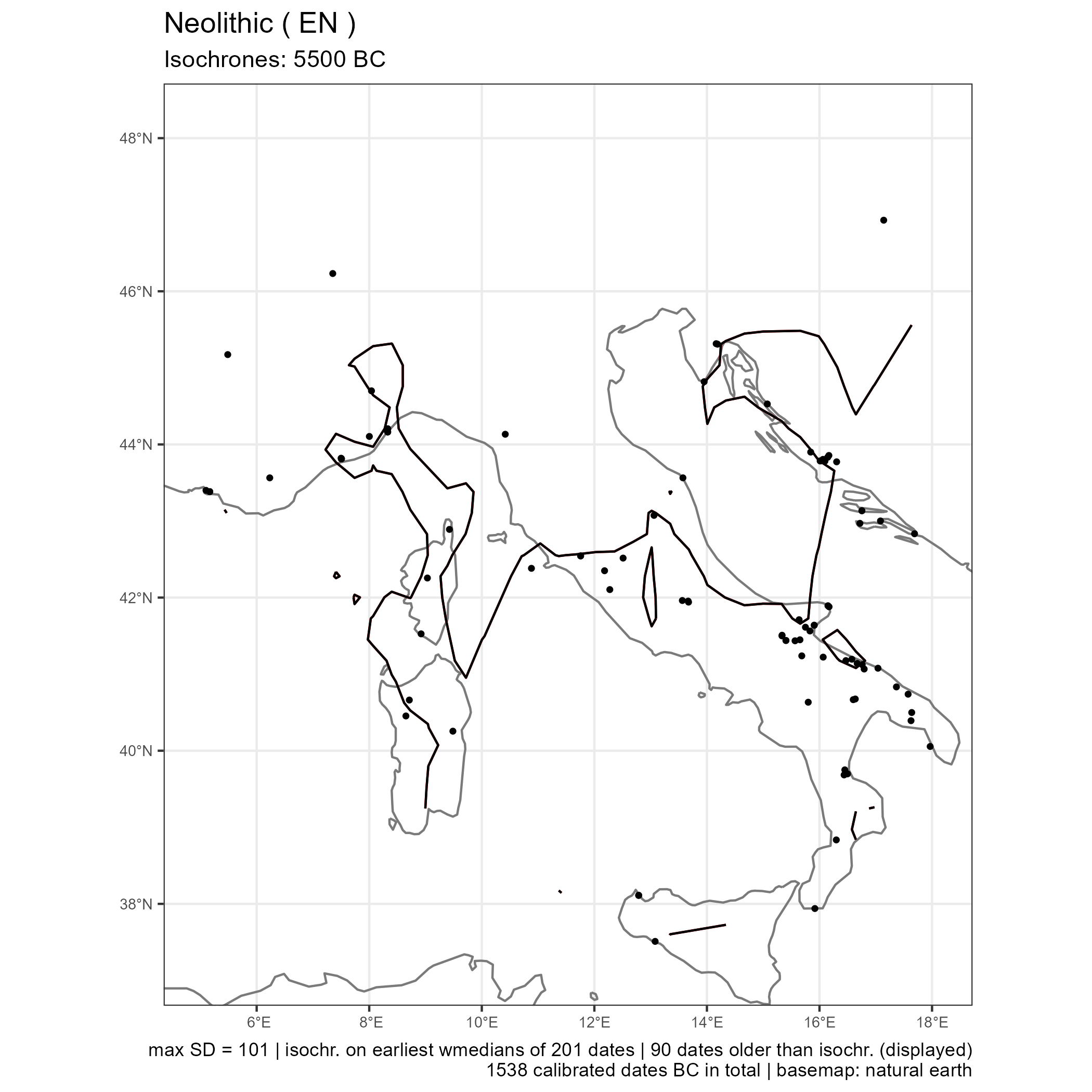
Spread of Neolithic in the Mediterranean
Eastern Mediterranean (in BC)
Case study 1: Balkans
Central Mediterranean (in BC)
Case study 2: Italy
Western Mediterranean (in BC)
End of the Mediterranean Neolithisation
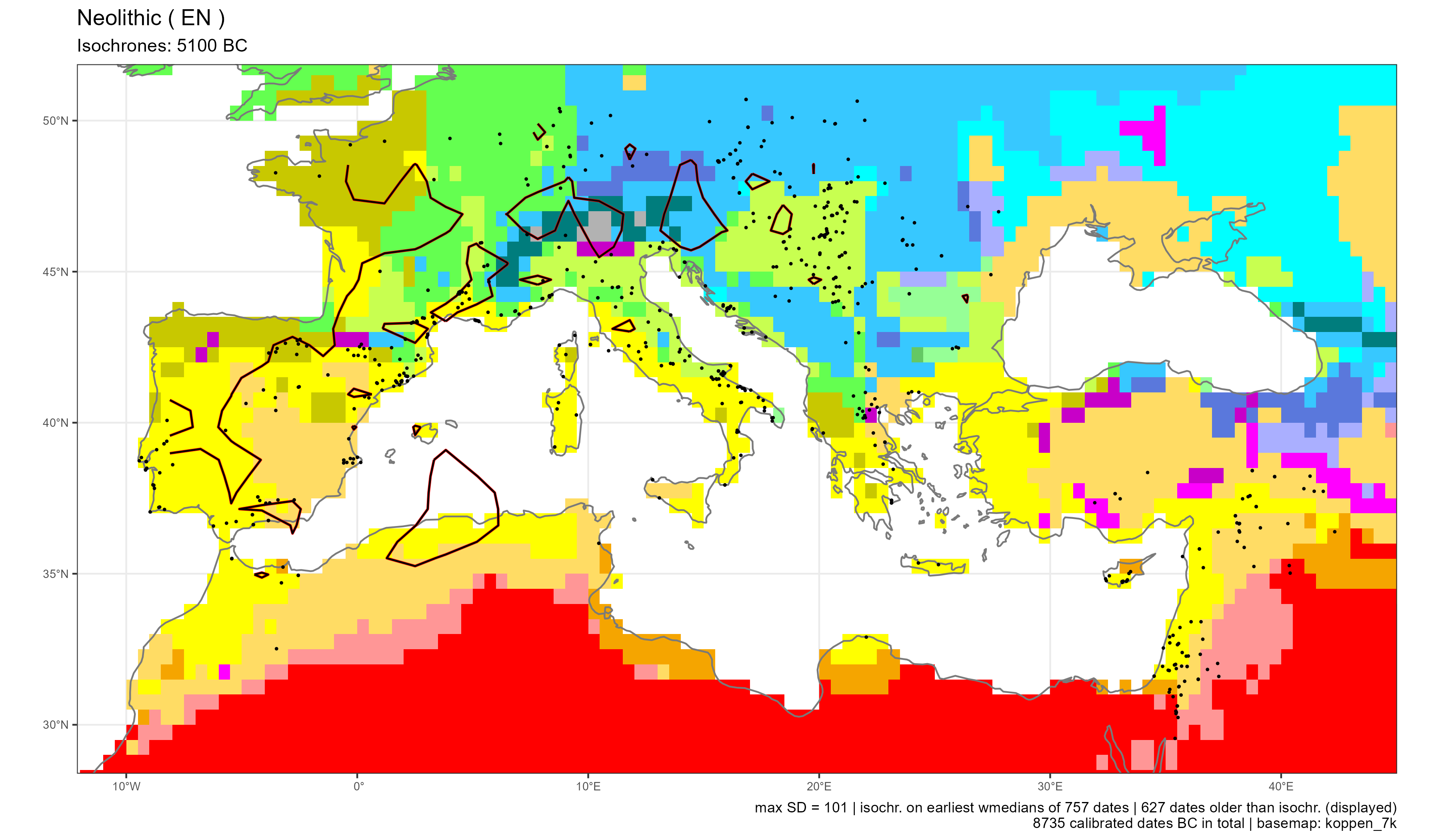
Climates evolution
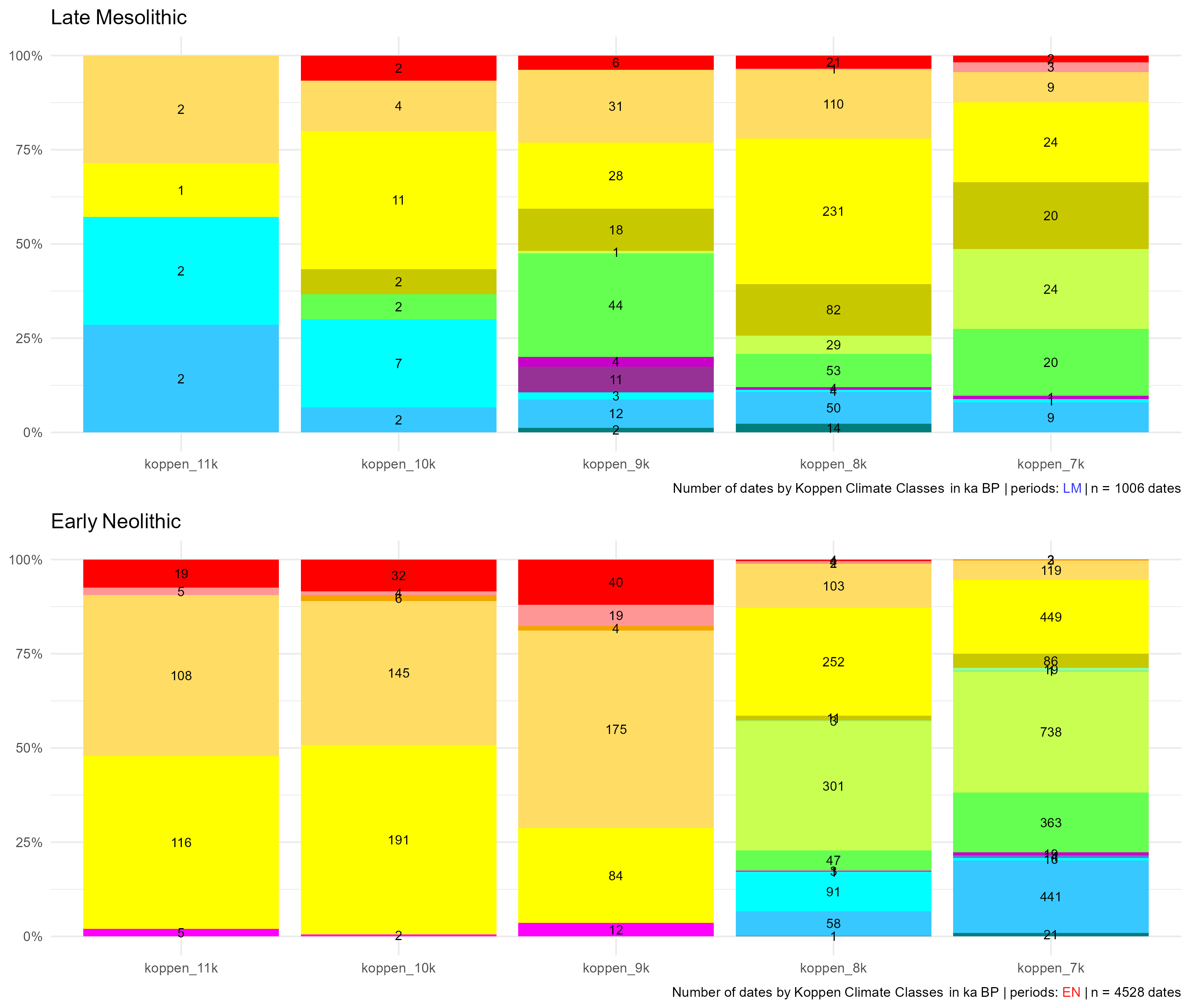
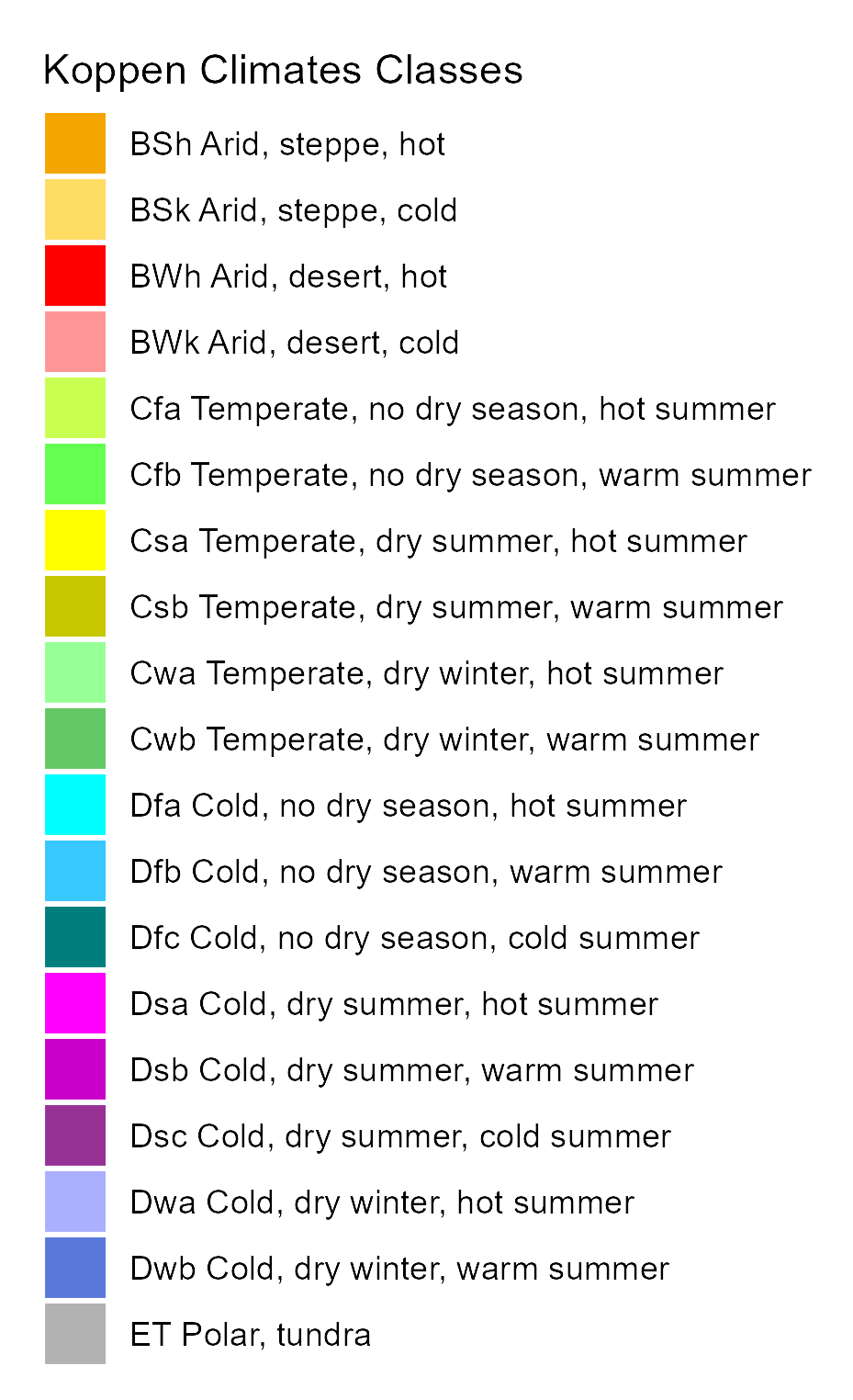
Discussion
Climates occupied by the Early Farmers
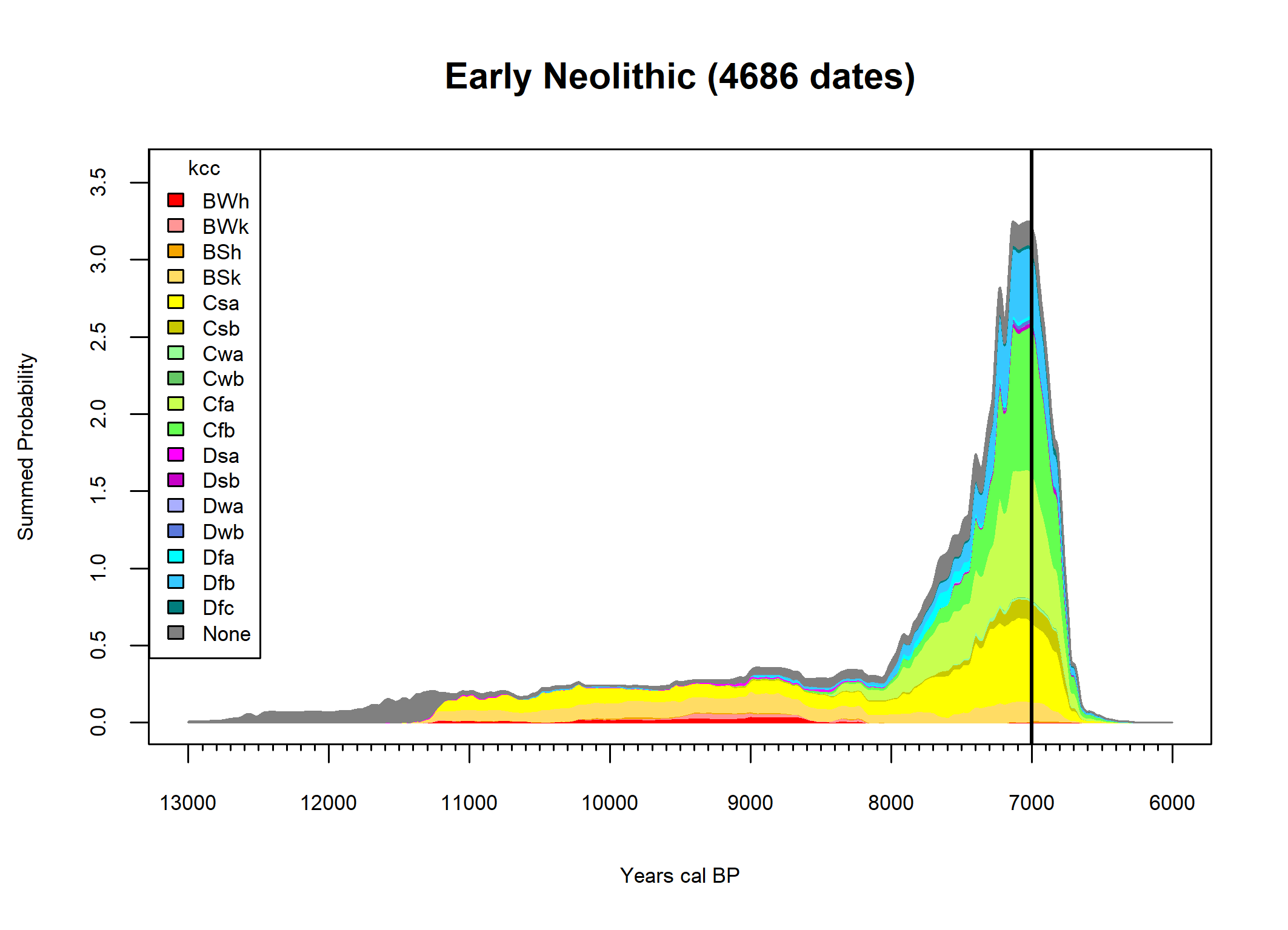
Thank you
Footnotes
Late Foragers. Create an image in a portrait layout of: A Mediterranean coastal area, view from distance (bird eye), during the Late Mesolithic, with a temperate to cold and humid climate, showing an estuary river banks and a part of a marsh. The dominant colors in the image should be cool tones, such as blues and green, and the people should be dressed in furs suitable for cold to temperate climates (Koppen climate classes: Cfb and Dfa). Include only 5 characters: A women collecting sea shells and collecting fruits and wild seeds in cane baskets. A children collecting wild seeds in cane baskets. A man fishing with a vegetal net. A woman hunting ducks with a bow. A man skinning a fish. Include only these items: A vegetal net An arrow. Living wild animals should be distant from humans. The characters and animals in the image must be realistic. The faces of the people should be well-defined. The tools should be made of wood, flints and bones only. The image should have: No domestic animals. No ceramic potteries. No glass. No candle or wood fire. Do not include anything that I didn’t described
Early Farmers. The scene depicts a Mediterranean landscape set in a river valley of the inland Iberian Peninsula during the Neolithic period. The environment reflects the typical Mediterranean vegetation, including holm oaks, oak trees, and shrubs. The landscape shows a mosaic of forests and small cereal fields, with more emphasis on the dense forest. In the foreground, a group of five people is working in the fields, harvesting wheat using wooden and flint sickles. The group consists of three men and two women, all dressed in prehistoric brown wool and linen garments, appropriate for the period. In the background, there is a small flock of black goats and brown sheep, which are being watched over by an elderly woman and a child, both holding wooden staffs. The animals are enclosed within a small wooden pen located far from the cereal fields prompt@ChatGPT.
Beyer, R. M., Krapp, M., & Manica, A. (2020). High-resolution terrestrial climate, bioclimate and vegetation for the last 120,000 years. Scientific data, 7(1), 236.
Krauß, R., Marinova, E., De Brue, H., & Weninger, B. (2018). The rapid spread of early farming from the Aegean into the Balkans via the Sub-Mediterranean-Aegean Vegetation Zone. Quaternary International, 496, 24-41. https://doi.org/10.1016/j.quaint.2017.01.019
Ivanova, M., De Cupere, B., Ethier, J., & Marinova, E. (2018). Pioneer farming in southeast Europe during the early sixth millennium BC: Climate-related adaptations in the exploitation of plants and animals. PLoS One, 13(5), e0197225. https://doi.org/10.1371/journal.pone.0197225
Didier Binder, Lucia Angeli, Louise Gomart, Thomas Huet, Roberto Maggi, Claire Manen, …, (2022). Le complexe de la Céramique Imprimée en Méditerranée centrale et nord-occidentale : une synthèse chronoculturelle (VIIe et VIe millénaires AEC). In: Céramiques imprimées de Méditerranée occidentale (VIe millénaire AEC) : données, approches et enjeux nouveaux. Actes de la séance de la Société préhistorique française de Nice (mars 2019), D. Binder and C. Manen (eds), Paris, Société préhistorique française.
Mazzucco, N., Mineo, M., Gibaja, J.F. (2023). La Marmotta site in the framework of the Early Mediterranean Neolithic. In: The Submerged Site of La Marmotta. Oxbow Books, Rome, Italy. Oxford.
Ammerman, A. J., & Cavalli-Sforza, L. L. (1971)[^2]. Measuring the rate of spread of early farming in Europe. Man, 674-688.
Fort, J. (2022). The spread of agriculture: quantitative laws in prehistory?. In Simulating Transitions to Agriculture in Prehistory (pp. 17-28). Cham: Springer International Publishing.
Betti, L., Beyer, R. M., Jones, E. R., Eriksson, A., Tassi, F., Siska, V., … & Manica, A. (2020). Climate shaped how Neolithic farmers and European hunter-gatherers interacted after a major slowdown from 6,100 BCE to 4,500 BCE. Nature Human Behaviour, 4(10), 1004-1010.
Binder, D., Angeli, L., Gomart, L., Huet, T., Maggi, R., Manen, C., … & Tagliacozzo, A. (2019, March). L’Impresso-cardial du nord-ouest et ses rapports avec la «zone-source»: une synthèse chrono-culturelle. In Céramiques imprimées de Méditerranée occidentale. Matières premières, productions, usages.

